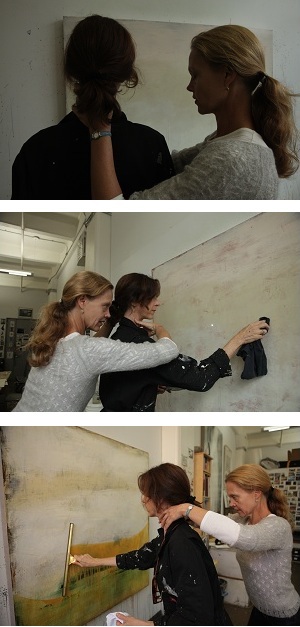 “Before studying the Alexander Technique I utilized physical therapy and yoga to address my shoulder pain, which remained at a pain level of 5-6. The Alexander Technique strengthened my previous progress and diminished my shoulder pain level to 0-1.
“Before studying the Alexander Technique I utilized physical therapy and yoga to address my shoulder pain, which remained at a pain level of 5-6. The Alexander Technique strengthened my previous progress and diminished my shoulder pain level to 0-1.
“Throughout the ten lessons I had with Teva, I learned a great deal about myself which gave me insight into the physical habits that gave rise to my pain in the first place. This process prompted me to think about how I use myself as a system within my surroundings, and how I choose to allow (or not allow) my body to respond to the stimuli around me on a daily basis.
“After three months of living pain free I am furthering my studies with Teva to pursue my voice and habits of breathing. How wonderful it is to discover ways that I can continue to free myself!”
– Sara, student of International Affairs
Lessons in the Alexander Technique are an accumulative learning process, building on simple principles which serve to refine and re-educate kinesthetic experience. The changes are communicated by gentle guidance from a teacher’s hands and verbal cuing, as well as through simple movement studies which serve to deepen discovery.
In a lesson, the teacher and student participate together in order to enliven physical awareness and regain innate poise which facilitates ease of movement. In successive stages, the student learns to recognize and practice an improvement in balance and coordination. This is practiced in standing, sitting, walking and while engaging in everyday activities. As the student’s awareness expands, the element of choice around letting go of habit and connecting with an increased potential for lively coordination becomes an active element as they move through their day.
“Teva’s movement work– teaching or one-on-one work– is thoughtful, deep, client-centered, and focused on the kinesthetic experience. I have taught with her, and been her student while in the acute phase of a terrible injury. Teva’s embodiment is a rich source of information and communication. The healing she engendered in me with her work was profound.” – George Russell, chiropractor/choreographer/movement teacher
The process of consciously recognizing habit and giving consent to a more integrated response is practiced both while lying down in a calm environment in reflective study. Setting time aside daily for this semi-supine practice of undoing stress and regaining balance in Active Rest with the floor, refreshes the nervous system and is a foundation for learning. In developing this daily practice, the student takes responsibility for their own growth as well as increasing their independence from a teacher in between lessons.
As skill is gained at steering and integrating new healthy physical habit, this coordination is applied to everyday activities. It becomes satisfying and fun to apply this new skill to forms of expression ranging from voicing poetry to public speaking, playing an instrument or sport, or even independently in moments of conflict where there are stakes and risks!
Ultimately, becoming a practitioner of the Alexander Technique allows one to improve any activity which they so choose to apply the practice. It is a discipline that serves as a pre-technique to any form, enhancing the degree of developed skill and authentic expression within this form. The learning is ongoing as long as one chooses to engage and explore.
Definition of terms used:
kinesthetic – the sense of movement, weight and/or effort as perceived through the body
coordination – the harmonious functioning of parts for effective functioning of the entire organism
habit – physical or mental patterns of tension activated neurologically that often have become automatic and unrecognized
suspending habit – a decision not to rush into a reaction; holding the space open in order to create an opportunity for something new to happen
directing release – giving wishes that form a link between your mental activity and releasing your muscles so that you can move with more freedom at the joints while maintaining poise within the whole organism
